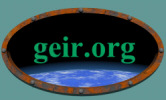
 |
|||||||
|
|
|
|
|
|
|

Atlantis Riverside
To divide Atlantian life into "plants" and "animals" is
misleading. Yes, the native life
does use DNA and produces eighteen amino acids, six of which overlap our own.
Yes, Atlantian bacteria, though unrelated, is little different than the
earthly varieties. But the dominate
form of life on Atlantis is more akin to fungi than anything else.
The worms that crawl in the ground and swim in the sea, and
even float in the sky under methane sacks, are just a motile life stage of a
creature that starts as a slime mold and ends as a bush.
The giant spores that fly and float like colorful bubbles are the spawn
of fruiting bodies of the styrofoam plants that line the shores, rivers and
pools of Atlantis.
The cellular components of this dominant kingdom of life
draw power from the sun through small organelles that produce carotenoid-like
chemicals. But inefficient chemicals
and a redder sun leave very few pure "plants".
Most organisms supplement their energy, at least in some life stage,
through methods chemical or predatory.
Styrofoams are the most widespread ground cover. Tendrils from many species of styrofoam static life stages reach deep into the soil, leaching nutrients, trapping burrowing worms and acting as a sturdy webbing to limit erosion. Like an iceberg, nine-tenths of a styrofoam is underground.
Technically, styrofoams are edible.
Some Atlantian proteins, carbohydrates and fats can be digested by
humans, but they are a poor source of energy and lack many vital nutrients.
And they taste like styrofoam.
And they often contain unhealthy concentrations of heavy metals.
Some styrofoam species expel heavy metals by concentrating them into
nodules that are covered by spheres of cellular material.
These little red beads are called "berries".
Don't eat the berries.
--excerpt from Introduction to Exobiology, Chiron Press, 2216
All pages and images ©1999 - 2010
by Geir Lanesskog, All Rights Reserved
Usage Policy
![]()